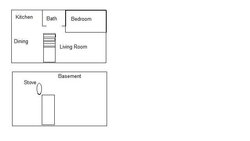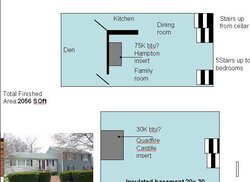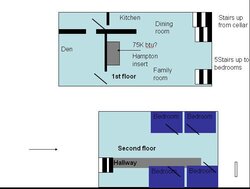I have a Walkout daylight basement.
8' Below grade on one side and 8' + above on the daylight side...
The basement is insulated on the daylight side with fiberglass insulation not sure what R value (previous owner).
The rest of the basement is finished off or will be when I am done. It will be using 2" Owens Corning Foam Insulation, framed up and drywalled.
Last winter I moved in after buying the house and had a Vermont Castings Vigilant in the basement. The heating sucked, it has no fire brick and i hate the built in damper.
So now I have the a Engalnder 13- NCH and I am hoping with the fire brick and the newer stove the heat will be better. I like in a cape / 3 story on the back with the walkout. I have a vent directly above the stove and one in the living room.
What are the opinions on this setup. Everyone says no on basements but what if they are finished. I want to keep my oil coast down and use my basebaord hot water heat for when i am not home...
I have a Burnham Hydronics OL Oil fired boiler with 2 zones and it is 87% efficient.
8' Below grade on one side and 8' + above on the daylight side...
The basement is insulated on the daylight side with fiberglass insulation not sure what R value (previous owner).
The rest of the basement is finished off or will be when I am done. It will be using 2" Owens Corning Foam Insulation, framed up and drywalled.
Last winter I moved in after buying the house and had a Vermont Castings Vigilant in the basement. The heating sucked, it has no fire brick and i hate the built in damper.
So now I have the a Engalnder 13- NCH and I am hoping with the fire brick and the newer stove the heat will be better. I like in a cape / 3 story on the back with the walkout. I have a vent directly above the stove and one in the living room.
What are the opinions on this setup. Everyone says no on basements but what if they are finished. I want to keep my oil coast down and use my basebaord hot water heat for when i am not home...
I have a Burnham Hydronics OL Oil fired boiler with 2 zones and it is 87% efficient.




